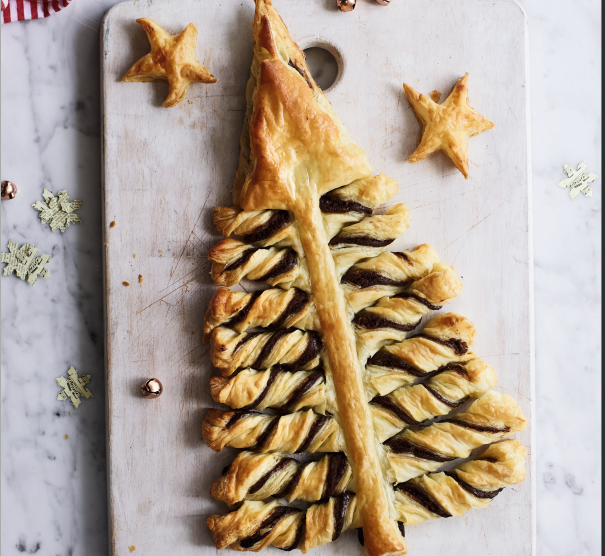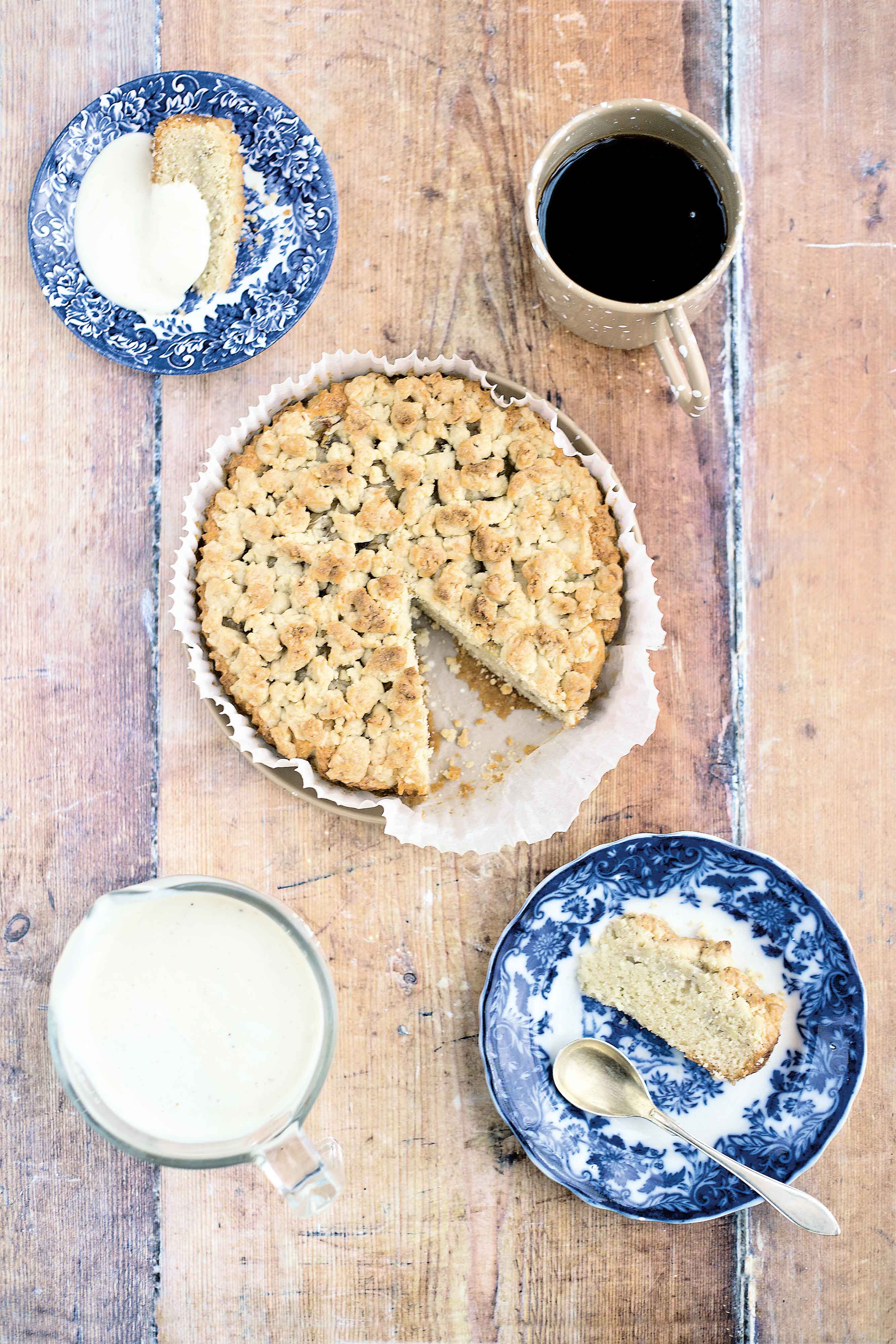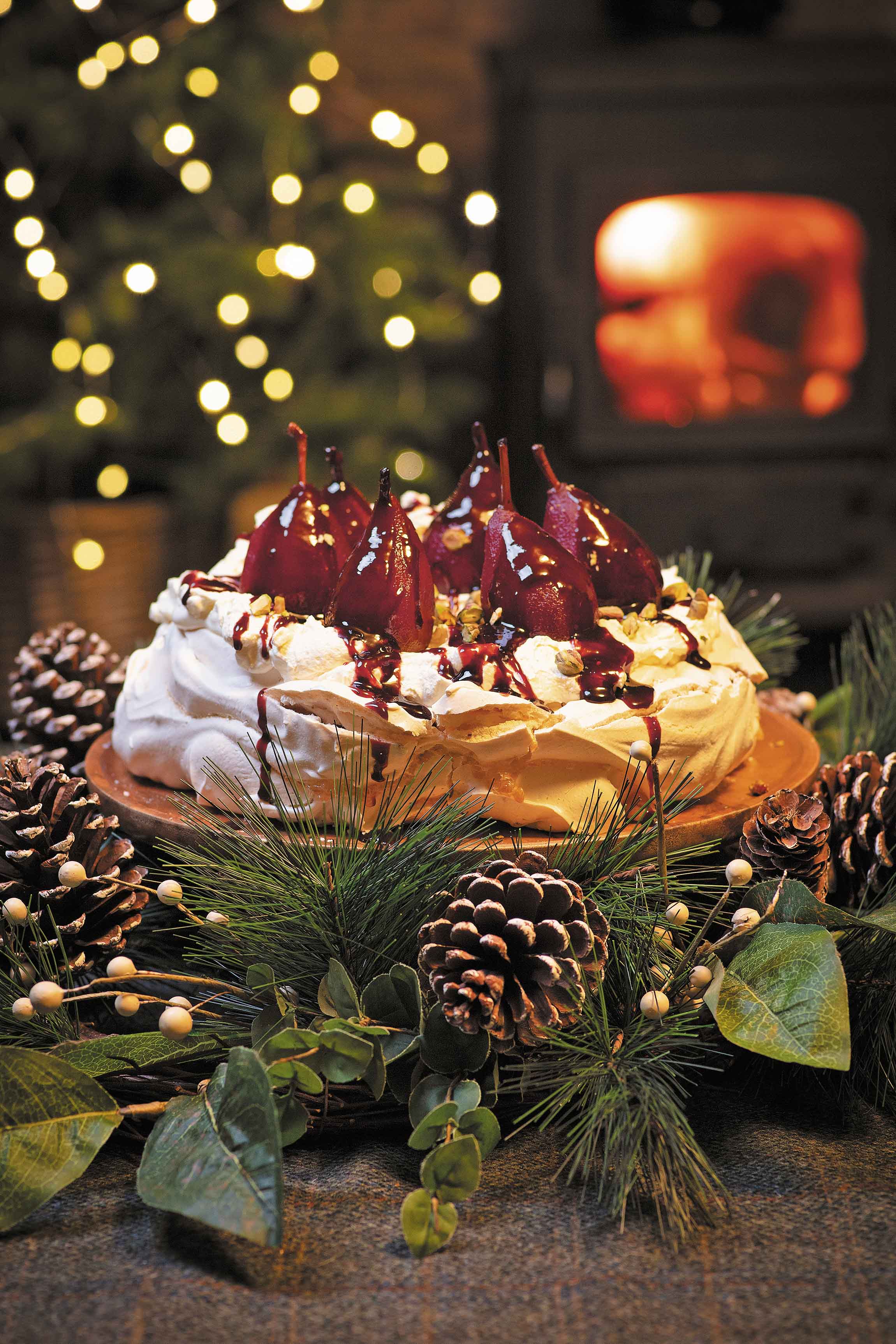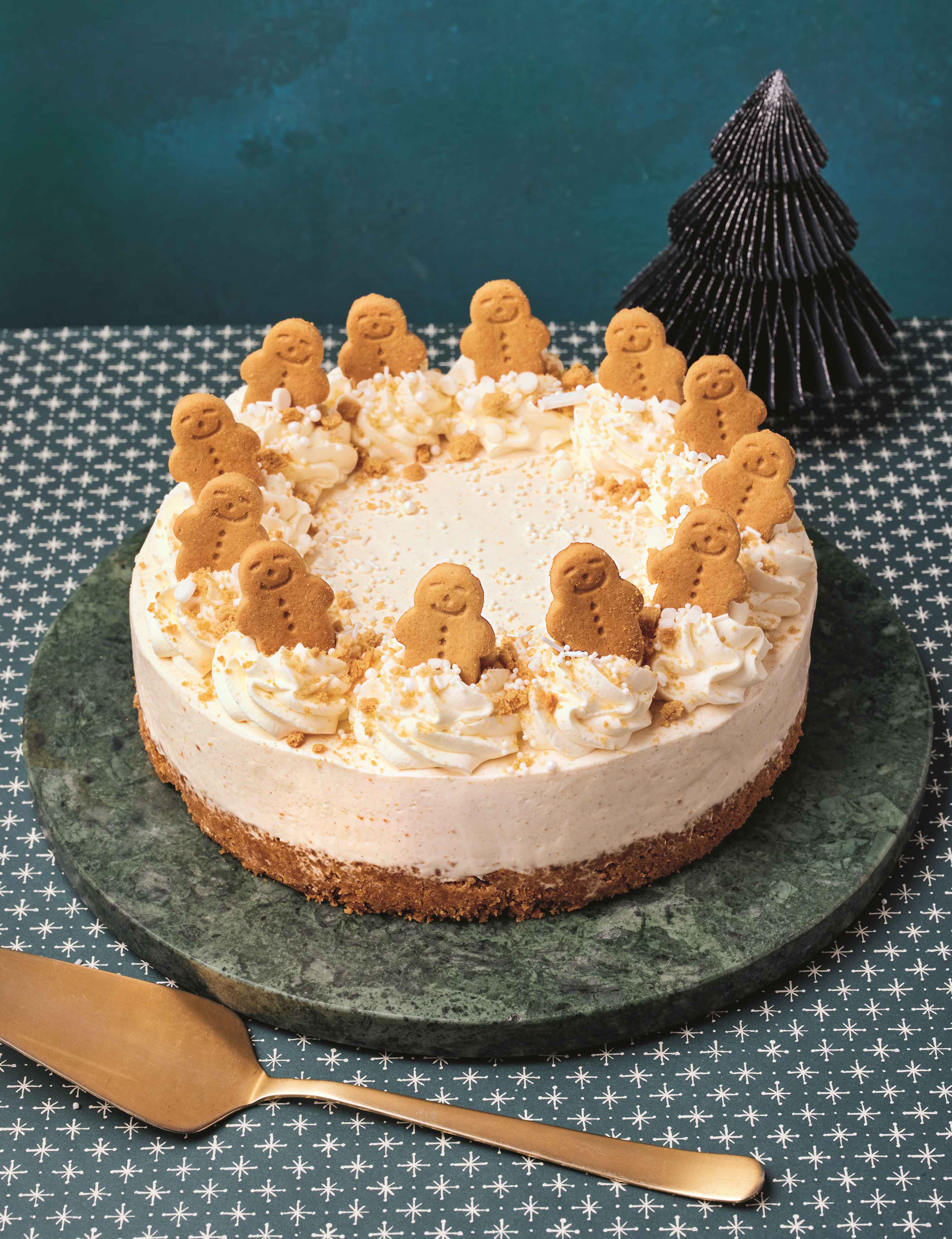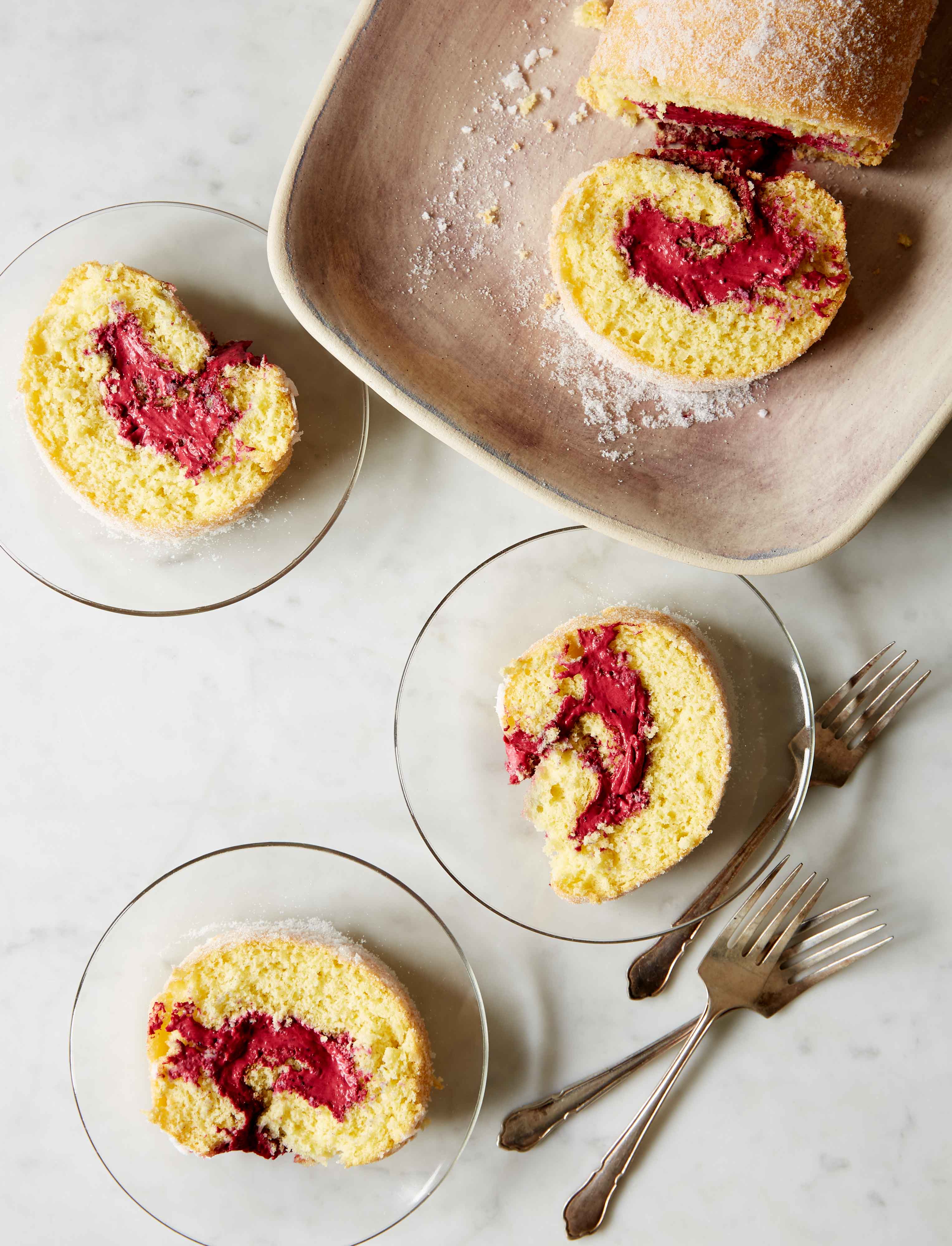Peggy Porschen’s Ombre Cherry & Chocolate Drip Cake
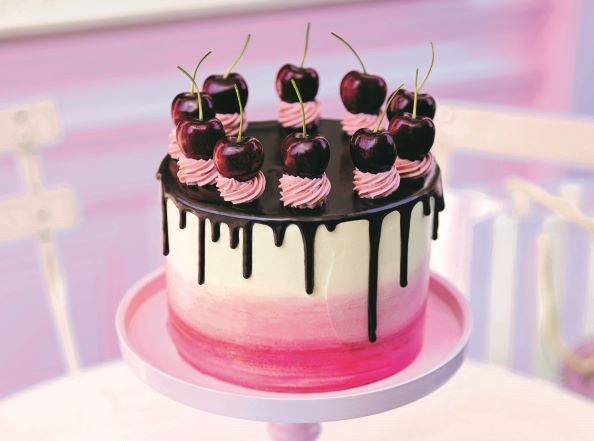
Peggy Porschen is a master baker who runs an iconic bakery in London, renowned for it's delicious cakes. Her ombre cherry drip cake is a spectacular, showstopping cake, featuring a chocolate drip and gorgeous cherry meringue buttercream with a fabulous ombre effect. This is a celebration cake recipe for keen bakers, drawing on a variety of baking techniques. Peggy's instructions are very comprehensive, and will guide you through the recipe!
1 hour 30 minutes prep, 20-30 minutes cook
Serves 8-10
Ingredients
For the vanilla sugar syrup
75g caster sugar
75ml water
½ tsp vanilla extract
For the vanilla and chocolate chip sponge:
125g salted butter, softened
250g caster sugar
1 tsp vanilla extract
5 medium eggs
250g self-raising flour, sifted
125g sunflower oil
100g dark chocolate chips (53% cocoa solids), roughly chopped
For the cherry meringue buttercream:
125g cherry purée, made from 400g pitted fresh or frozen black morello cherries, cooled
270g caster sugar
65ml water
150g egg whites (from approx. 5 eggs)
340g unsalted butter, diced and softened
Pink food colouring paste
For the morello cherry filling
150g good-quality morello cherry jam
For the chocolate ganache
75g dark chocolate (53% cocoa solids)
90ml whipping cream
1 tsp liquid glucose
For the decoration
3 x 15cm shallow cake tins
Small piping bag, fitted with a small star nozzle
15cm thin cake board
Sugar thermometer
Palette knife
Cake turntable
Method
Make the vanilla sugar syrup. Put the sugar, water and vanilla extract in a saucepan, bring to a boil and cook until the sugar is dissolved. Remove from the heat and allow to cool.
To make the vanilla and chocolate chip sponges, preheat the oven to 175°C/Gas 5. Grease 3 x 15cm shallow cake tins with oil spray and line the bases with baking parchment. Put the butter, sugar and vanilla extract into the bowl of an electric mixer fitted with a paddle attachment and beat at medium–high speed until pale and fluffy. In a separate bowl, lightly beat the eggs, then slowly pour them into the butter and sugar mix while beating. The eggs and butter should both be at room temperature to avoid splitting. However, should the mixture split, add 1 tbsp flour to bring the batter back together before adding more egg.
Once all the eggs are incorporated, fold in the sifted flour in two batches, gently combining each time. Scrape the bottom of the bowl using a rubber spatula to ensure the batter is evenly mixed. Add the oil and mix until combined. Sprinkle the chocolate chips over the top and fold through. Divide the batter evenly between the cake tins and gently spread the batter towards the edges. It should be slightly higher around the sides with a slight dip in the middle; this will ensure that it bakes evenly when it rises.
Bake in the preheated oven for 20–30 minutes. The sponges are cooked when the edges come away from the sides of the cake tin and the tops spring back to the touch. Leave the sponges to rest in the tins for about 10 minutes then brush the tops with the vanilla sugar syrup while the cakes are still hot. Once slightly cooled, unmould the sponges from the cake tins carefully, and leave to cool completely on a wire rack.
Make the meringue buttercream. Put the sugar and water in a small saucepan and bring to a boil, stirring occasionally. Add a sugar thermometer. In another bowl, whisk egg whites to stiff peaks. Once the sugar reaches 121°C (softball stage), remove the pan from the heat. Slowly pour the hot syrup into the whipped egg whites in a thin and steady stream while mixing on a low to medium speed. Once all the sugar syrup is added, turn the speed up to high and continue whisking until the mixture has cooled and the meringue is stiff and fluffy. Now slowly add the soft, diced butter to the meringue, whisking all the time, until it is all incorporated. The texture should look smooth and glossy. Now slowly fold the morello cherry purée into the mix.
To assemble the cake, place the first sponge layer on the cake board. Spread a layer of cherry buttercream, about 5mm thick, over the top using a palette knife. Place the middle sponge on top. Spoon about 2 heaped tbsp of the buttercream into a small piping bag and pipe a 5mm thick ring around the edge of the sponge layer. Fill the buttercream ring with the cherry jam using a spoon. Place the third sponge on top, this time brown side up.
Ensure that all the sponges are centred and the top of the cake is level. Tidy up any bits of buttercream that are squeezing out from around the edges with a palette knife. Coat the cake all around with more buttercream using a palette knife and side scraper. The first buttercream coat is also called a ‘crumb coat’ as its purpose is to hold the crumbs in place and create a solid basic shape. It doesn’t have to be perfect and it’s fine if some cake crumb shows through the buttercream. Chill for about 30 minutes until the buttercream has set.
Divide the remaining cherry buttercream into two equal portions. Mix one half with a small amount of pink food colour to a deep cherry pink shade. Once the crumb coat has set, place the cake back on the turntable and cover the top evenly with plain buttercream using the palette knife. Apply 3 evenly-sized rings of dark pink, pale pink and plain buttercream around the sides, using the palette knife. Start at the bottom layer and spread the dark pink buttercream one-third of the way up the side of the cake. Follow suit with the pale pink buttercream for the middle third and finish with the plain buttercream for the upper third and the top of the cake. Reserve some pale pink cherry buttercream at room temperature for piping the rosettes later.
Smooth all 3 buttercream stripes using a side scraper. If not smooth after the first time, wipe the edge of the side scraper clean and go around again and again, until the sides look smooth. Clean up the top edge of the cake by spreading the overhanging buttercream from the edge towards the middle of the cake using a palette knife or side scraper.
To make the chocolate ganache, break the chocolate into pieces and place in a heatproof bowl. Gently heat the cream and liquid glucose in a small saucepan until just starting to simmer. Pour the cream slowly into the chocolate, mixing with a rubber spatula or whisk each time until combined. Pour the ganache into a jug, cover the top with cling film to prevent a skin from forming and allow to cool for a few minutes until lukewarm.
To decorate the cake, place it at the top of a turntable. Pour the warm ganache around the edge of the cake, while turning it steadily. Allow the ganache to run down the edges in thin spaced out drips. Using a palette knife, spread the ganache towards the middle of the cake until it coats the whole top of the cake smoothly. Chill the cake for about 20 minutes, or until the ganache has set.
Spoon the remaining pale pink cherry buttercream into a piping bag fitted with a small star nozzle. Pipe 10 evenly-sized and -spaced out rosettes around the top of the cake and stick a fresh cherry on top of each rosette.
Recipes taken from Peggy Porschen: A Year in Cake (Quadrille, £22) Photography ©Paul Plews
Visit websiteMore recipes to try
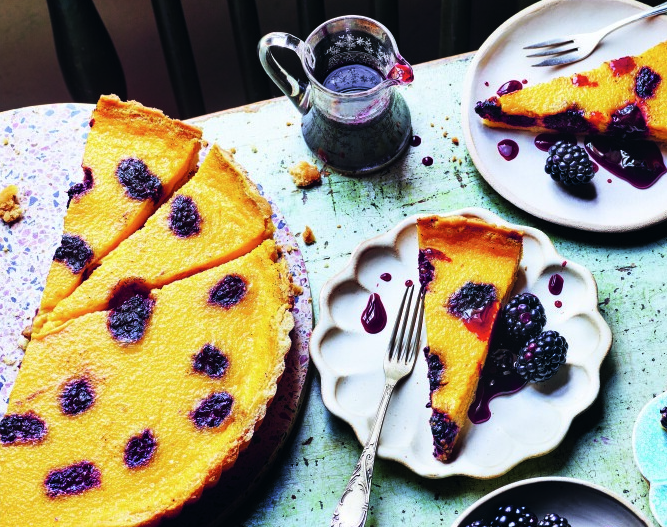
20 minutes plus chilling time
Serves 6-8 slices
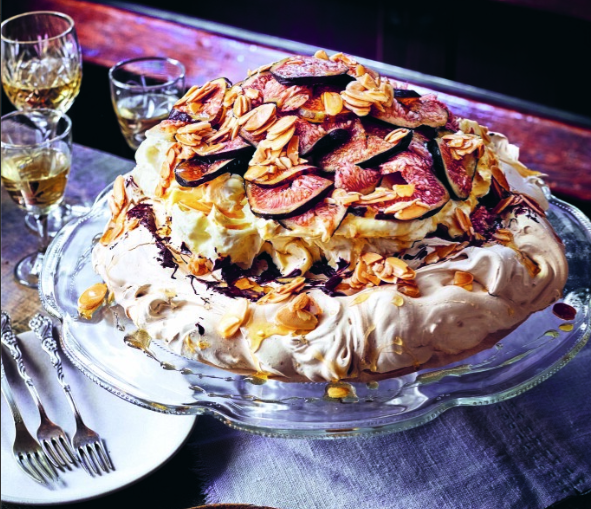
20 minutes
Serves 10-12
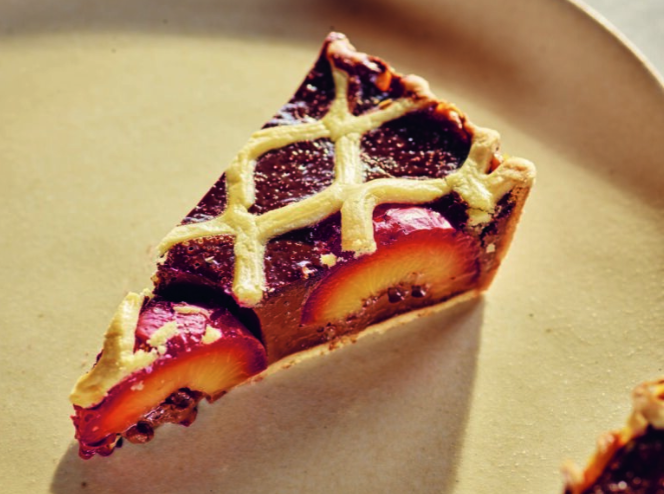
30 minutes
Serves 6-8
Great British Food Awards
Tasting videos

3 of the best biscuit and tea pairings
Treat yourself by discovering three decadent ways to match award-winning biscuits with tea
